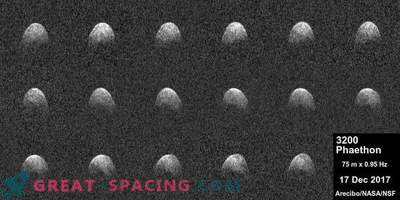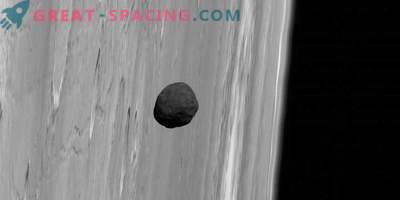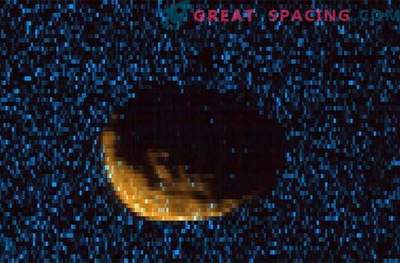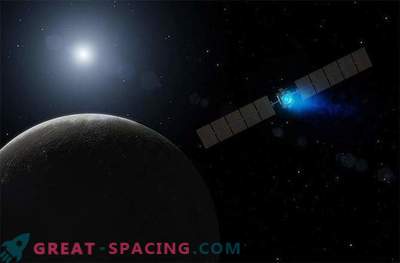
Artistic vision of polarized light reflected by near-Earth asteroid Phaeton
Based on a new study of how a near-Earth asteroid, Phaeton reflects light at different angles, scientists believe that its surface may reflect less light than previously thought. The mission of DESTINY + is passing by.
The reflection of the object of light depends not only on its albedo (the percentage of light reflection), but also the angle of illumination. Scientists are interested in a special effect, which is how the polarization changes, when sunlight beats off the asteroid surface. From a scientific point of view, light is considered as electromagnetic waves. They create changes in the electric and magnetic fields. The directions of these changes may be random or aligned. If the second option, the light is considered polarized.
Scientists used the Pirka 1.6-meter telescope in Hokkaido (Japan) to observe the near-earth asteroid (3200) Phaeton. They studied the changes in the polarization of light, which it reflected at different angles of illumination. Conclusions suggest that, at certain angles, the light reflected from the Phaeton is the most polarized among all the observed small bodies in the solar system. The object was first noticed in 1983, and it acts as the parent body of the Geminids meteor shower. Most of the objects of meteor showers are comets, but Phaeton does not show typical activity. Before us is an active asteroid with confirmed dust emissions. There is also an amazing blue color.
One possible explanation for the strong polarization is that the surface of the Phaeton may be darker than expected. Asteroid surfaces are covered with loose gravel. When light reflected from a rough surface strikes a different part of the surface and is again reflected to the observer, multiple scattering makes polarization non-systemic.
There is also an option that the rubble covering the surface consists of larger grains or the material is more porous than it was supposed. Large grains are formed when heated, and therefore the surface can glow up to 1000 ° C in the period of the closest approach to the Sun.
In 2022, they plan to launch the Japanese research satellite DESTINY +, which reaches up to Phaeton and will fix the surface in the pictures. This will allow astronomers to characterize archeology.











































